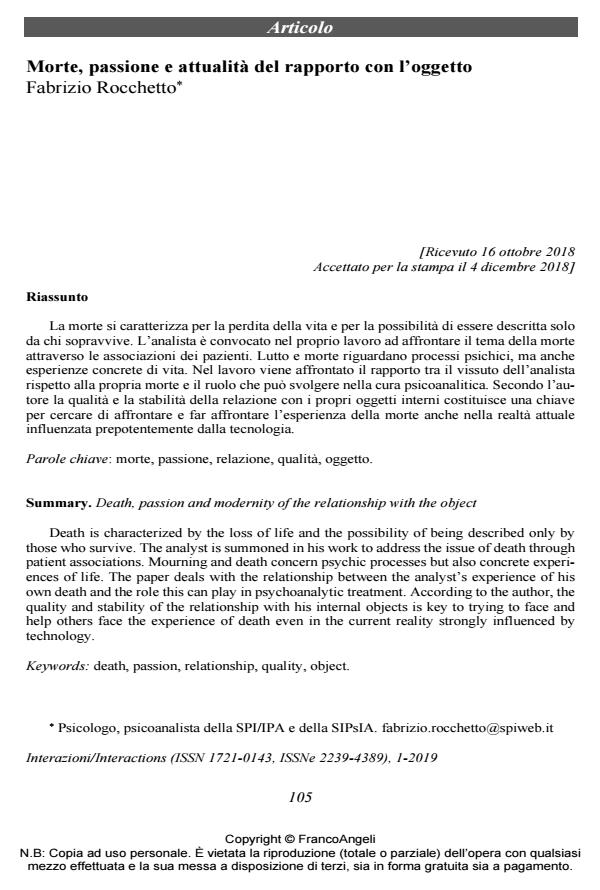Death, passion and modernity of the relationship with the object
Journal title INTERAZIONI
Author/s Fabrizio Rocchetto
Publishing Year 2019 Issue 2019/1
Language Italian Pages 14 P. 105-118 File size 167 KB
DOI 10.3280/INT2019-001008
DOI is like a bar code for intellectual property: to have more infomation
click here
Below, you can see the article first page
If you want to buy this article in PDF format, you can do it, following the instructions to buy download credits

FrancoAngeli is member of Publishers International Linking Association, Inc (PILA), a not-for-profit association which run the CrossRef service enabling links to and from online scholarly content.
Death is characterized by the loss of life and the possibility of being described only by those who survive. The analyst is summoned in his work to address the issue of death through patient associations. Mourning and death concern psychic processes but also concrete experiences of life. The paper deals with the relationship between the analyst’s experience of his own death and the role this can play in psychoanalytic treatment. According to the author, the quality and stability of the relationship with his internal objects is key to trying to face and help others face the experience of death even in the current reality strongly influenced by technology.
Keywords: Death, passion, relationship, quality, object.
Fabrizio Rocchetto, Morte, passione e attualità del rapporto con l’oggetto in "INTERAZIONI" 1/2019, pp 105-118, DOI: 10.3280/INT2019-001008